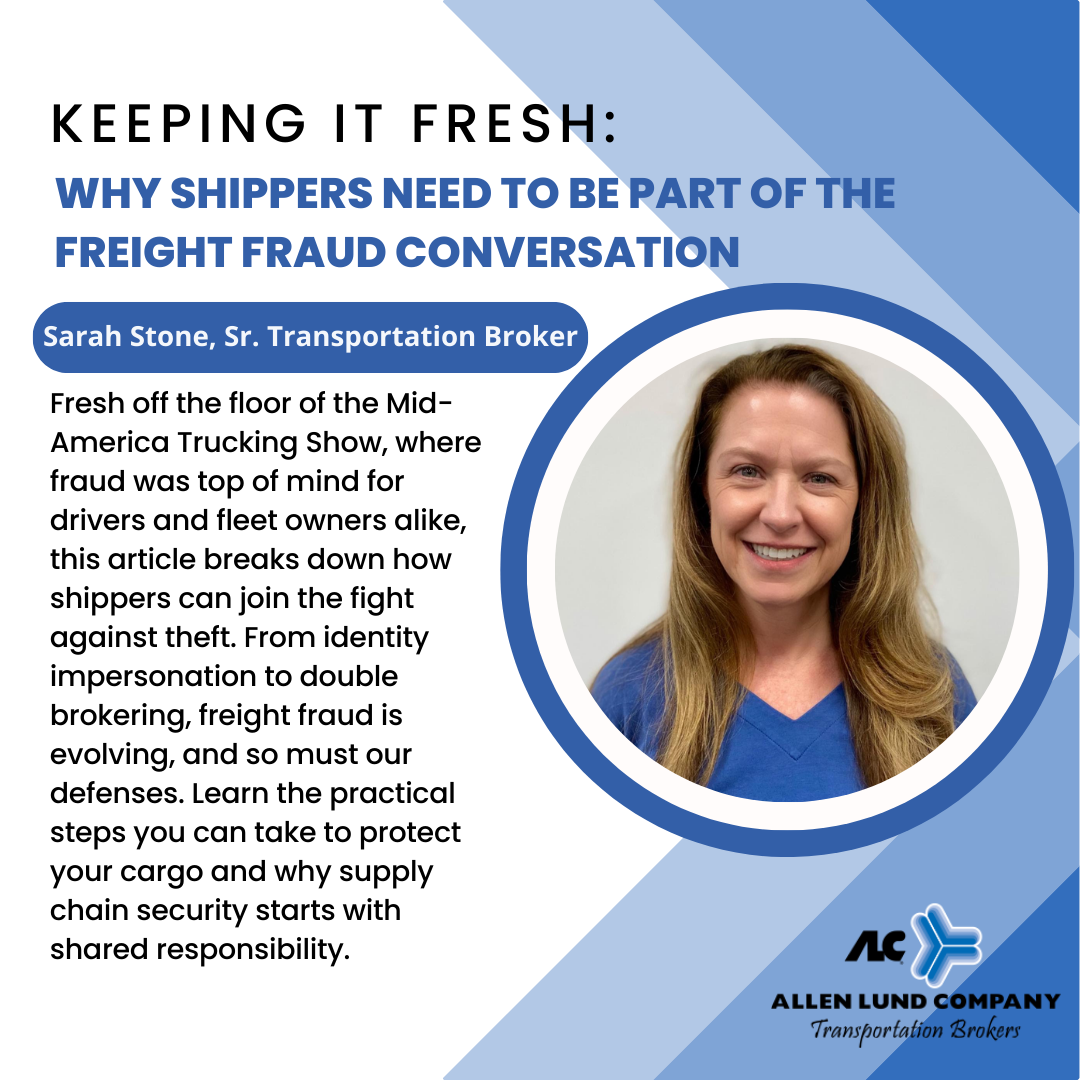
Everyone is talking about freight fraud and cargo theft. I recently attended the Mid-America Trucking Show (MATS), the largest trucking show in North America, where fraud and theft were the primary topics of discussion among the carriers and drivers in attendance. Held annually in Louisville, KY, MATS attracts everyone from large carrier owners looking to expand their fleets to the owner-operators who drive the trucks.
While concern is growing among those on the road, combating fraud requires support from every corner of the supply chain, including shippers. Freight fraud is a broad term encompassing various forms of theft, deception, or misrepresentation throughout the shipping process. It is more than just stealing cargo, it can involve identity impersonation (using fake MC/DOT numbers), double brokering, and fake carriers using spoofed websites to book loads. As a shipper, this can lead to the theft of cargo, supply chain disruptions, damage to reputation, and financial loss.
Preventing freight fraud isn’t just a broker or carrier issue, it’s a supply chain issue. For shippers, it is important to include your vendors and contracted warehouse groups on the plan to protect your freight. It will take everyone in the chain to fight fraud and theft. Establish a verification process for confirming carrier and driver information before loading a truck, and make certain that the carrier is providing the correct pick up information. This may sound simple, but it can often be overlooked at a warehouse that is backed up, or short staffed, and just wants to get the freight out the door.
Customers can play a vital role in building a more secure industry by following best practices such as:
- Partnering with fraud-aware brokers and carriers.
- Requiring load-tracking apps or systems.
- Verifying pick up numbers and driver names prior to loading.
- Embracing technology and data-driven security measures.
- Engaging in industry discussions and education.
By working together and staying informed, we can strengthen our defenses and keep freight moving safely and securely.
Read the original article here


